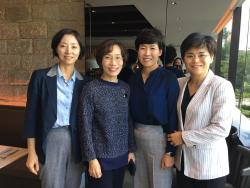The WHO CC UTS acknowledges use of key language from The WHO Global Strategic Directions for Nursing and Midwifery (2021–2025).
The spread of Middle East respiratory syndrome coronavirus (MERS-CoV) to South Korea, and now to China, is an important signal of the need for increased vigilance in global health security measures. While most MERS-CoV infections have been contracted through human-to-human contact within health care settings, the virus origins are zoonotic and evidence suggests it has emanated from dromedary camels in Saudi Arabia [1].

This MERS-CoV outbreak in Seoul in 2015, where 186 people fell sick and 36 died including medical staff, is the largest Coronavirus case cluster outside the Middle East before the recent outbreak of 2019-nCoVA in Wuhan, China [1]. As with the previous outbreaks in Saudi Arabia, where MERS was first identified in 2012, poor hospital infection control measures were important in the transmission of MERS in South Korea [1].
Army nurses generally work within the Ministry of Defence and are spread out at different bases across the country. Nurses have completed their training and are registered before entering the military. With many “civilian” nurses refusing to treat the sick, army nurses — there are a total of 900 in the country — Koung Hwa Jung, Seunyoung Joe, Hyewon Kim and Myoung Ok Kwon were ordered to take on the job.
Most hospitals in Korea are private. With little education about MERS-CoV in the country, many private doctors and nurses refused to care for the sick, so the National Department of Health delegated all authority to the military. Army nurses, experienced in using personal protective equipment (PPE) and how to manage MERS patients, took over the management of patients.
The personal challenges for these four nurses were enormous as their experience with MERS had been extremely limited, but they accepted this as part of their job. With the responsibility to care for any infectious patients they needed to be mentally and physically prepared to provide the care required.
Thankfully the outbreak was contained quickly, largely due to information disseminated nationally through mass media and via smartphones, which advised people to go to a public healthcare centre if they had a fever. From there, people were sent to the infectious diseases ward if they had signs of MERS-CoV. During these times of emergency, the importance of having good communication systems and processes in place cannot be underestimated.
The four nurses said that they learned a lot from the outbreak, such as how to share information, improve practice and look to international Centres for Disease control (CDCs) for emerging issues. Their experience highlights the many roles that military nurses can take on. They need to be ready and prepared for any situation that might arise and perform much broader roles than just nursing — they need to be a driver and a logistician as well. They had to get things done and their military training meant they could make better decisions under time-critical pressure.
1. World Health Organization. Middle East respiratory syndrome coronavirus (MERS-CoV). 2019; Available from: https://www.who.int/news-room/fact-sheets/detail/middle-east-respiratory-syndrome-coronavirus-(mers-cov).

